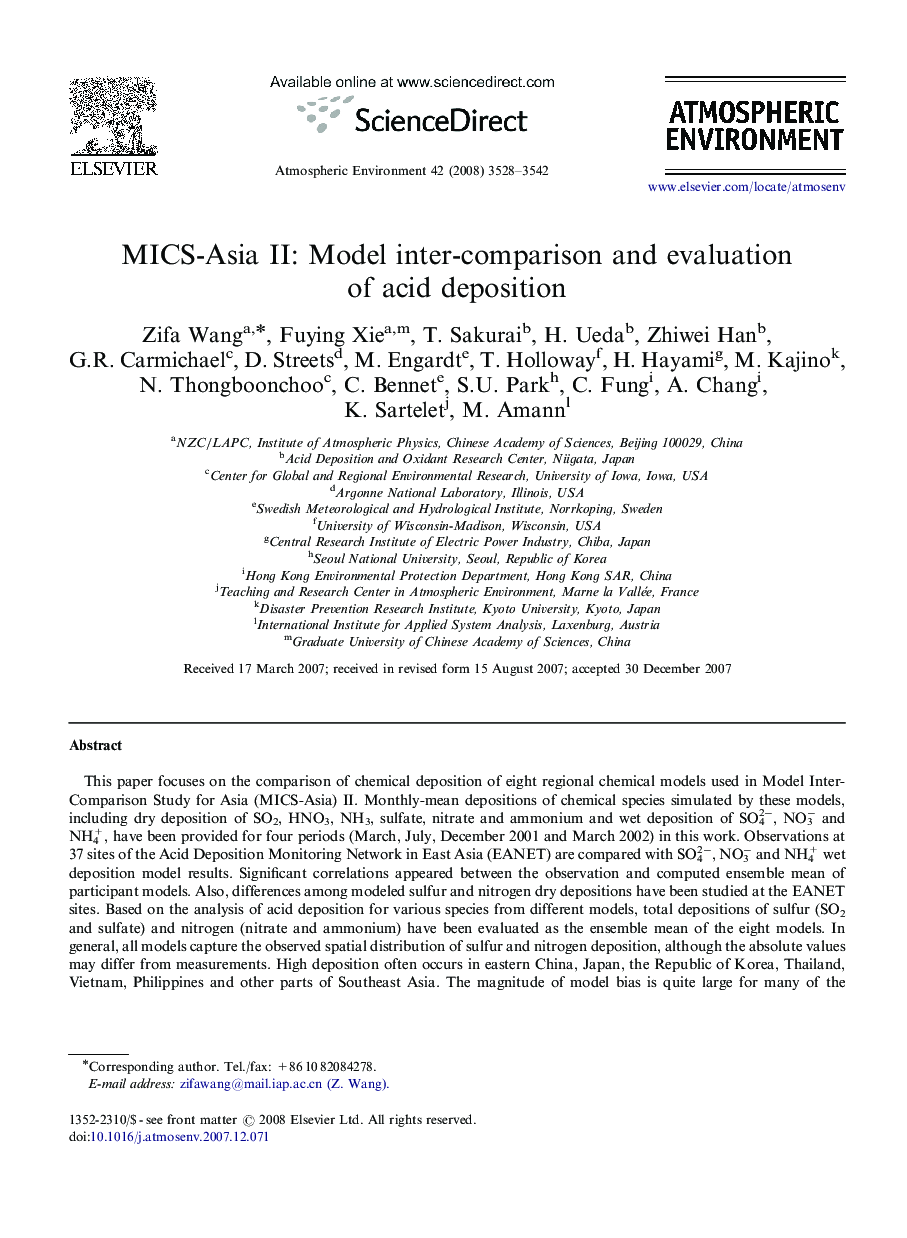| Article ID | Journal | Published Year | Pages | File Type |
|---|---|---|---|---|
| 4442058 | Atmospheric Environment | 2008 | 15 Pages |
This paper focuses on the comparison of chemical deposition of eight regional chemical models used in Model Inter-Comparison Study for Asia (MICS-Asia) II. Monthly-mean depositions of chemical species simulated by these models, including dry deposition of SO2, HNO3, NH3, sulfate, nitrate and ammonium and wet deposition of SO42−, NO3− and NH4+, have been provided for four periods (March, July, December 2001 and March 2002) in this work. Observations at 37 sites of the Acid Deposition Monitoring Network in East Asia (EANET) are compared with SO42−, NO3− and NH4+ wet deposition model results. Significant correlations appeared between the observation and computed ensemble mean of participant models. Also, differences among modeled sulfur and nitrogen dry depositions have been studied at the EANET sites. Based on the analysis of acid deposition for various species from different models, total depositions of sulfur (SO2 and sulfate) and nitrogen (nitrate and ammonium) have been evaluated as the ensemble mean of the eight models. In general, all models capture the observed spatial distribution of sulfur and nitrogen deposition, although the absolute values may differ from measurements. High deposition often occurs in eastern China, Japan, the Republic of Korea, Thailand, Vietnam, Philippines and other parts of Southeast Asia. The magnitude of model bias is quite large for many of the models. In examining the reasons for model–measurement disagreement, we find that differences in chemical processes, deposition parameterization, and modeled precipitation are the main reasons for large model disparities.
